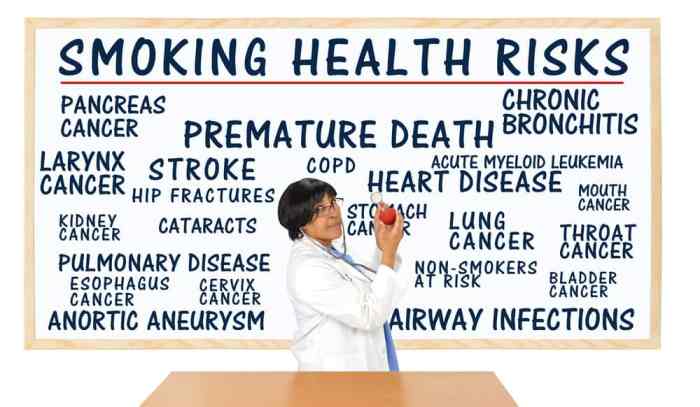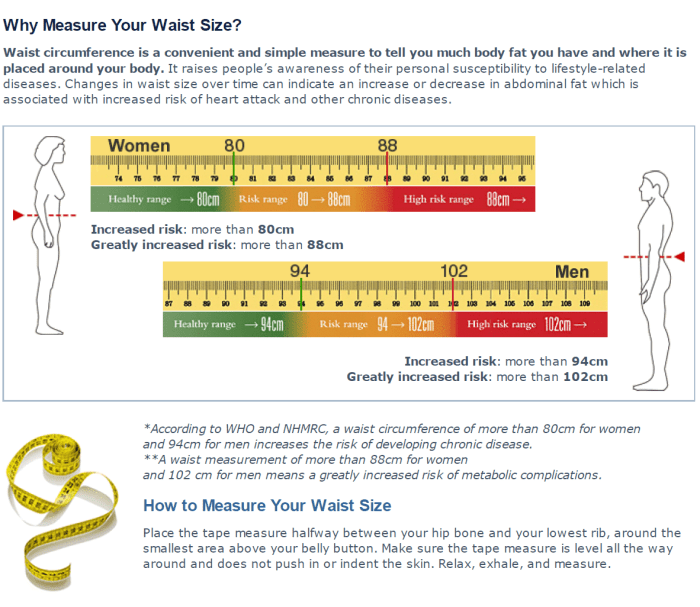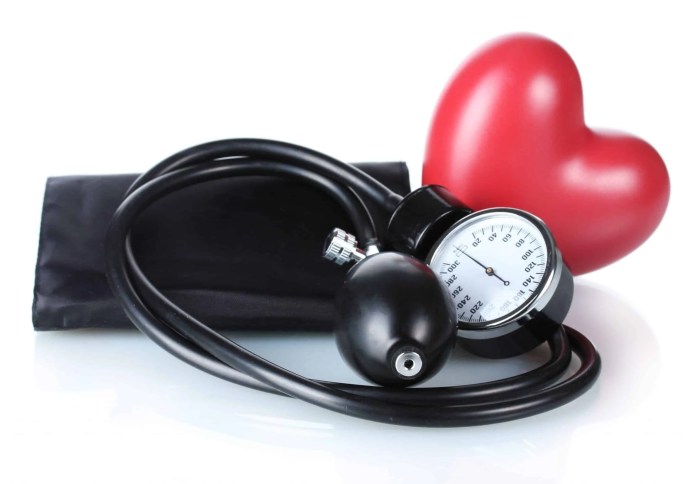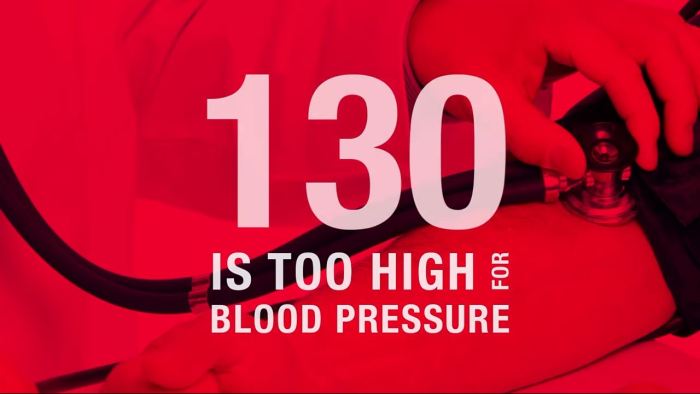Things to stop if you want to live longer: This post delves into crucial lifestyle choices that can significantly impact your lifespan. We’ll explore the negative effects of unhealthy habits and offer actionable strategies to cultivate healthier practices. From diet and exercise to stress management and sleep hygiene, we’ll cover a comprehensive approach to a longer, healthier life.
Let’s unpack what you can stop doing to enhance your journey towards longevity.
This journey to a longer and healthier life starts with understanding the detrimental effects of certain lifestyle choices. Neglecting our physical and mental well-being often leads to various health issues, ultimately shortening our lifespans. In this post, we’ll cover several critical areas, including diet, exercise, stress, substance use, sleep, social connections, the environment, and mental well-being. Understanding these elements and the practical steps to improve them can empower you to take control of your health and well-being.
Unhealthy Dietary Habits
Our dietary choices significantly impact our overall health and longevity. Making conscious decisions about what we eat can contribute to a longer, healthier life. This section explores common unhealthy habits, contrasting them with healthier approaches to nutrition.
Common Unhealthy Dietary Habits
Poor dietary habits contribute to a variety of health problems, increasing the risk of chronic diseases and potentially shortening lifespans. Here are five prevalent unhealthy dietary habits:
- Excessive Consumption of Processed Foods: Processed foods often contain high levels of added sugars, unhealthy fats, and sodium, contributing to weight gain, high blood pressure, and an increased risk of heart disease and type 2 diabetes. Examples include packaged snacks, sugary cereals, and fast food.
- Insufficient Fruit and Vegetable Intake: A diet lacking in fruits and vegetables deprives the body of essential vitamins, minerals, and antioxidants. This can weaken the immune system, increasing vulnerability to various illnesses. It also reduces the intake of fiber, which is crucial for digestive health.
- Overconsumption of Sugary Drinks: Sugary drinks, including sodas, juices, and sweetened beverages, provide empty calories with little nutritional value. These drinks contribute to weight gain, dental problems, and increase the risk of various health issues, including heart disease.
- Inadequate Protein Intake: Protein is essential for building and repairing tissues. Insufficient protein intake can lead to muscle loss, reduced metabolism, and weakened immune function. This is especially important for maintaining muscle mass as we age.
- High Consumption of Saturated and Trans Fats: A diet high in saturated and trans fats can raise LDL (“bad”) cholesterol levels, increasing the risk of heart disease and stroke. These fats are often found in red meat, processed foods, and fried foods.
Dietary Approaches for Longevity
Various dietary approaches offer potential benefits for longevity. Comparing their strengths and weaknesses helps individuals make informed choices.
- Mediterranean Diet: This diet emphasizes fruits, vegetables, whole grains, legumes, nuts, and healthy fats like olive oil. It promotes heart health, reduces inflammation, and has been associated with a lower risk of chronic diseases. Drawbacks can include higher costs for some ingredients and potential challenges in maintaining adherence to specific guidelines.
- Plant-Based Diet: This diet prioritizes plant-based foods, such as fruits, vegetables, legumes, and whole grains, often limiting or eliminating animal products. It can improve cardiovascular health, lower cholesterol, and reduce the risk of certain cancers. Drawbacks can include potential deficiencies in certain nutrients like vitamin B12 and iron if not carefully planned, and the need for careful supplementation.
- Ketogenic Diet: This diet significantly restricts carbohydrates, promoting the body to use fat for energy. It can lead to weight loss and improvements in certain metabolic conditions. Drawbacks include potential nutrient deficiencies, potential negative impacts on gut health, and potential challenges in long-term adherence due to strict limitations on carbohydrate intake.
Sample Weekly Meal Plan
This sample weekly meal plan emphasizes nutrient-rich foods and limits processed foods. Adjust portion sizes based on individual needs and preferences.
- Monday: Grilled chicken breast with roasted vegetables (broccoli, carrots, sweet potatoes), quinoa.
- Tuesday: Lentil soup with whole-wheat bread, side salad.
- Wednesday: Salmon with steamed asparagus and brown rice.
- Thursday: Chickpea curry with brown rice and mixed greens.
- Friday: Lean beef stir-fry with plenty of mixed vegetables and brown rice.
- Saturday: Homemade pizza with whole-wheat crust, vegetables, and lean protein.
- Sunday: Chicken and vegetable stew with whole-wheat pasta.
Strategies to Overcome Dietary Challenges
Overcoming dietary challenges requires a proactive approach. Here are five strategies:
- Planning Ahead: Create meal plans and grocery lists to avoid impulsive unhealthy choices. Planning can help ensure you have healthy options readily available.
- Mindful Eating: Pay attention to your body’s hunger and fullness cues, eating slowly, and savoring your food. This can help prevent overeating.
- Seeking Support: Connect with friends, family, or a registered dietitian for support and guidance in achieving dietary goals.
- Gradually Transition: Don’t try to overhaul your diet overnight. Make gradual changes to create sustainable habits.
- Finding Healthy Alternatives: Explore healthier versions of favorite foods or recipes to maintain enjoyment while improving nutrition.
Nutritional Benefits of Fruits and Vegetables
Fruits and vegetables provide essential nutrients for overall health and longevity.
| Fruit/Vegetable | Nutritional Benefit | Longevity Impact | Serving Suggestion |
|---|---|---|---|
| Berries (strawberries, blueberries) | Antioxidants, vitamins | Reduces inflammation, supports immune function | 1 cup |
| Leafy Greens (spinach, kale) | Vitamins, minerals, fiber | Supports gut health, improves digestion | 1 cup, raw or cooked |
| Citrus Fruits (oranges, lemons) | Vitamin C, antioxidants | Boosts immune system, supports collagen production | 1 medium orange or 1 cup segments |
| Carrots | Vitamin A, fiber | Supports eye health, promotes healthy digestion | 1 medium carrot, raw or cooked |
| Sweet Potatoes | Vitamins, minerals, fiber | Supports immune system, provides energy | 1 medium sweet potato, baked or roasted |
Lack of Physical Activity

Staying active is crucial for a long and healthy life. Regular physical activity not only strengthens our bodies but also boosts our mood, improves cognitive function, and reduces the risk of chronic diseases. Ignoring the importance of movement can significantly impact our lifespan, making consistent physical activity a cornerstone of longevity. Choosing activities that fit our lifestyle and health conditions is key to maintaining a healthy routine.
Types of Physical Activity for Different Groups
Different types of physical activity cater to various age groups and health conditions. Choosing activities appropriate to our individual needs and limitations is crucial for safety and effectiveness. The goal is to incorporate movement into our daily routines, not to impose strenuous workouts that may lead to injuries.
- Aerobic Exercise (Cardio): Activities like brisk walking, jogging, swimming, cycling, and dancing improve cardiovascular health, increase lung capacity, and burn calories. These activities are suitable for most age groups and fitness levels. Benefits include improved heart health, reduced risk of heart disease, stroke, and type 2 diabetes, and enhanced mood. For older adults, low-impact aerobic activities like walking or water aerobics are ideal, while younger adults can engage in more vigorous activities like running or dancing.
- Strength Training: Exercises that build muscle mass, such as weightlifting, resistance bands, or bodyweight exercises (push-ups, squats), are beneficial for all ages. They increase bone density, metabolism, and overall strength. Strength training helps prevent age-related muscle loss (sarcopenia), improving balance and reducing the risk of falls, particularly important for older adults. This type of activity is crucial for maintaining a healthy body composition and reducing the risk of osteoporosis.
- Flexibility Exercises: Stretching and yoga improve joint mobility, reduce muscle stiffness, and enhance balance. These exercises are suitable for all ages and fitness levels, but especially beneficial for older adults to maintain flexibility and reduce the risk of injury. They can also help improve posture and reduce stress. Examples include stretching routines, Pilates, and Tai Chi.
Comparing Benefits of Different Exercise Types
Aerobic exercise, strength training, and flexibility exercises each contribute to a longer lifespan in distinct ways. While all three are vital, their individual benefits affect different aspects of health and longevity.
| Exercise Type | Primary Benefits | Impact on Lifespan |
|---|---|---|
| Aerobic Exercise | Improved cardiovascular health, increased lung capacity, weight management | Reduced risk of heart disease, stroke, type 2 diabetes, and some cancers. |
| Strength Training | Increased muscle mass, bone density, metabolism, improved balance | Reduced risk of falls, osteoporosis, sarcopenia, and improved overall physical function. |
| Flexibility Exercises | Improved joint mobility, reduced muscle stiffness, enhanced balance | Reduced risk of injuries, improved posture, and stress reduction, contributing to overall well-being. |
Importance of Consistency
Consistency in physical activity is paramount for achieving long-term health benefits and longevity. Sporadic exercise is less effective than a regular routine.
“Consistency is key to reaping the rewards of physical activity.”
Establishing a routine and incorporating exercise into daily life leads to better results. Regularity allows the body to adapt and reap the benefits of each type of activity.
Common Excuses and Strategies
Many people cite excuses for not exercising. Addressing these excuses is crucial for starting and maintaining a consistent routine.
- Lack of time: Even short bursts of activity can be beneficial. Scheduling 10-15 minute exercise sessions throughout the day can add up. Look for opportunities to move during the day, such as taking the stairs instead of the elevator or walking during phone calls.
- Lack of motivation: Find an activity you enjoy. Exercise with a friend or join a group. Reward yourself for achieving goals.
- Feeling overwhelmed: Start small and gradually increase the intensity and duration of your workouts. Focus on progress, not perfection.
- Lack of energy: Even a small amount of exercise can boost energy levels. Physical activity can help improve sleep quality, which in turn improves energy levels.
- Fear of injury: Start with low-impact exercises and consult with a doctor or physical therapist before starting a new routine. Proper warm-up and cool-down are crucial to prevent injuries.
Beginner Workout Routine
A structured workout routine for beginners can help establish a consistent habit.
- Warm-up (5 minutes): Light cardio, like jumping jacks, high knees, arm circles, and dynamic stretches (arm swings, leg swings). This prepares the body for more intense activity.
- Cardio (20 minutes): Choose an activity you enjoy, such as brisk walking, jogging, cycling, or swimming. Maintain a moderate intensity.
- Strength Training (15 minutes): Focus on compound exercises like squats, lunges, push-ups, and rows. Use bodyweight or light weights. Aim for 2-3 sets of 10-12 repetitions for each exercise.
- Flexibility (5 minutes): Hold each stretch for 20-30 seconds. Focus on major muscle groups, including hamstrings, quads, chest, and back.
- Cool-down (5 minutes): Light cardio and static stretches (holding stretches for 30-60 seconds). This helps the body recover and reduces muscle soreness.
Stress Management Techniques
Chronic stress, a pervasive and often underestimated factor in overall well-being, has a demonstrably negative impact on lifespan. Prolonged exposure to stress hormones like cortisol can lead to a cascade of negative health consequences, including cardiovascular issues, weakened immune systems, and mental health problems. Understanding and addressing stress is therefore crucial for a longer, healthier life.The human body is remarkably resilient, capable of adapting to a wide range of stressors.
However, the continuous barrage of modern life often overwhelms our natural coping mechanisms. Effective stress management techniques are vital in maintaining a balanced and healthy lifestyle. These techniques equip individuals with tools to navigate challenges, promote emotional regulation, and foster a sense of calm.
The Correlation Between Chronic Stress and Reduced Lifespan
Chronic stress significantly contributes to a shortened lifespan. Elevated cortisol levels, a hallmark of chronic stress, can damage the cardiovascular system, leading to increased blood pressure, heart rate, and risk of heart disease. Furthermore, chronic stress can compromise the immune system, making individuals more susceptible to illnesses. Studies have consistently linked chronic stress to a heightened risk of various diseases and premature mortality.
For instance, individuals experiencing high levels of chronic stress often exhibit higher rates of obesity, diabetes, and mental health issues, all of which are associated with a reduced life expectancy.
Different Stress Management Techniques
Several techniques can effectively manage stress. These methods vary in their approach and effectiveness, offering individuals diverse avenues for stress reduction. Choosing a method that resonates with an individual’s personality and lifestyle is key to long-term success.
Want to live a longer, healthier life? Cutting out harmful habits is key. Smoking, excessive alcohol, and a sedentary lifestyle are major contributors to various health problems, including the devastating neurodegenerative disease, amyotrophic lateral sclerosis (ALS) amyotrophic lateral sclerosis als. Addressing these factors can significantly improve your chances of a longer and more fulfilling life.
Comparing the Effectiveness of Stress Management Techniques
- Meditation: A practice that involves focusing on a specific object, thought, or activity to quiet the mind and reduce racing thoughts. Meditation can foster a sense of calm and improve attention span. Research suggests that regular meditation can lower blood pressure and heart rate, thereby reducing stress-related physiological responses.
- Yoga: A holistic practice that combines physical postures (asanas), breathing techniques (pranayama), and meditation. Yoga promotes physical flexibility, strength, and balance, which can positively impact mood and reduce stress. Studies show that yoga can effectively reduce anxiety and improve overall well-being.
- Deep Breathing Exercises: Simple techniques focusing on controlled inhalations and exhalations. These exercises help regulate the nervous system, calming the body’s response to stress. Deep breathing can immediately reduce feelings of anxiety and promote relaxation. Scientific research confirms the effectiveness of deep breathing in lowering heart rate and blood pressure, demonstrating its role in stress management.
Practical Strategies for Incorporating Stress Reduction Practices into Daily Life
- Schedule dedicated time for stress reduction practices: Creating a regular schedule for meditation, yoga, or deep breathing helps integrate these practices into daily routines. Consistency is key to experiencing the full benefits.
- Find a supportive community: Sharing experiences and support with others practicing stress reduction techniques can provide motivation and accountability.
- Identify and challenge negative thought patterns: Recognizing and reframing negative thought patterns is crucial for managing stress. This can involve cognitive behavioral therapy techniques.
- Prioritize self-care: Engage in activities that promote relaxation and rejuvenation, such as taking a warm bath, listening to music, or spending time in nature.
- Seek professional help when needed: If stress becomes overwhelming, seeking support from a therapist or counselor can provide tailored strategies and coping mechanisms.
Stress Reduction Methods Comparison
| Method | Description | Benefits | Drawbacks |
|---|---|---|---|
| Meditation | Focusing on a single point to quiet the mind | Reduced anxiety, improved focus, lowered blood pressure | Requires consistent practice, may not be suitable for all individuals |
| Yoga | Combining physical postures, breathing, and meditation | Improved flexibility, strength, reduced stress | May require physical exertion, some poses can be challenging |
| Deep Breathing | Controlled inhalations and exhalations | Immediate stress relief, easily accessible | May not address underlying stress triggers, may not be sufficient for chronic stress |
Step-by-Step Guide for Mindfulness Meditation
- Find a quiet space: Choose a comfortable and peaceful environment free from distractions.
- Assume a comfortable posture: Sit or lie down in a relaxed position.
- Focus on your breath: Notice the sensation of each inhale and exhale.
- Acknowledge thoughts and feelings: Allow thoughts and feelings to arise without judgment.
- Return to your breath: Gently redirect your attention back to your breath when your mind wanders.
Substance Abuse and Addiction: Things To Stop If You Want To Live Longer
Substance abuse, encompassing the misuse of drugs and alcohol, poses a significant threat to overall well-being and longevity. The detrimental effects extend far beyond immediate physical discomfort, impacting various aspects of health and potentially shortening one’s lifespan. Understanding the nature of substance abuse, its consequences, and available resources for recovery is crucial for personal and community health.Substance abuse significantly compromises the body’s ability to function optimally.
Chronic exposure to substances can lead to a cascade of adverse health outcomes, ranging from organ damage to mental health disorders. The long-term impact often manifests as a decline in physical and cognitive function, ultimately reducing the quality and duration of life.
Negative Impacts on Lifespan
Substance abuse significantly contributes to premature mortality. The direct and indirect effects on various organ systems, coupled with the increased risk of accidents and other adverse events, accelerate the aging process and decrease life expectancy. This negative impact extends to individuals’ ability to engage in healthy behaviors, such as proper nutrition and exercise, further exacerbating the negative consequences.
For instance, individuals struggling with addiction often neglect their health, leading to poor nutrition and a sedentary lifestyle, both of which are significant risk factors for various diseases.
Types of Substance Abuse and Their Effects
Different substances have unique effects on the body. Understanding these variations is crucial for recognizing the specific dangers associated with each type of abuse.
- Alcohol Abuse: Alcohol abuse can lead to liver damage, including cirrhosis and alcoholic hepatitis. It also increases the risk of certain cancers, cardiovascular diseases, and mental health problems like depression and anxiety. For example, heavy alcohol consumption can lead to alcoholic cardiomyopathy, a condition where the heart muscle weakens and enlarges, potentially resulting in heart failure. The long-term impact of alcohol abuse can significantly decrease life expectancy and severely impair quality of life.
Want to add years to your life? Cutting out harmful habits like smoking and excessive alcohol is a great start. But did you know some medications can actually contribute to sundowning, a phenomenon where confusion and agitation increase in the evening? Understanding which medications cause these symptoms, like what medications cause sundowning symptoms , is crucial for optimizing your health and well-being.
Prioritizing a healthy lifestyle, including medication management, is key to living a longer, more fulfilling life.
- Opioid Abuse: Opioid abuse, whether through prescription painkillers or illicit drugs, can lead to respiratory depression, overdose, and addiction. The long-term use of opioids can cause severe damage to the liver and kidneys, leading to chronic health issues and potentially premature death. Overdose deaths are a significant public health concern, particularly involving combinations of opioids and other substances.
- Cocaine Abuse: Cocaine abuse can lead to cardiovascular complications such as heart attack and stroke. It can also trigger seizures, psychosis, and severe mental health issues. Long-term cocaine abuse can result in significant cognitive impairment, impacting memory, learning, and overall mental function, significantly impacting longevity and quality of life. For example, cocaine abuse has been linked to an increased risk of infectious diseases like HIV due to risky behaviors often associated with substance use.
Long-Term Consequences of Substance Abuse
The long-term consequences of substance abuse extend beyond the immediate physical effects. Chronic substance abuse often leads to severe health issues, impacting various organ systems and contributing to significant impairments in daily functioning. This, in turn, significantly reduces the overall quality of life and can contribute to a shorter lifespan.
- Weakened Immune System: Regular substance use often weakens the immune system, making individuals more susceptible to infections and diseases.
- Mental Health Disorders: Substance abuse can exacerbate existing mental health conditions or lead to new ones, such as anxiety, depression, and psychosis.
- Social Isolation: Substance abuse can damage relationships and lead to social isolation, further contributing to a decline in health and well-being.
Recognizing Signs of Substance Abuse
Recognizing the signs of substance abuse in oneself or others is crucial for early intervention and treatment. Early intervention can significantly improve the chances of recovery and a better quality of life. Pay attention to changes in behavior, mood, or physical appearance.
- Changes in Behavior: These changes might include neglecting responsibilities, isolating oneself from social activities, or exhibiting erratic behavior.
- Mood Swings: Individuals struggling with substance abuse might experience unpredictable mood swings, from extreme irritability to apathy.
- Physical Changes: Physical changes such as bloodshot eyes, changes in appetite, or unexplained weight loss may indicate substance abuse.
Resources for Seeking Help, Things to stop if you want to live longer
If you or someone you know is struggling with substance abuse, help is available. Reaching out for support is a sign of strength, not weakness. Seeking help is an essential step toward recovery.
- National Helpline: A confidential helpline can provide information, support, and guidance for individuals and their families.
- Treatment Centers: Various treatment centers offer comprehensive programs to address substance abuse and promote recovery.
- Support Groups: Support groups provide a safe space for individuals to share experiences and receive encouragement during recovery.
Sleep Hygiene and Quality
Sleep is not just a downtime activity; it’s a fundamental pillar of a healthy and long life. Adequate sleep allows our bodies to repair and rejuvenate, impacting everything from our physical health to our cognitive function. Ignoring sleep’s importance can lead to a cascade of negative consequences, diminishing our overall well-being and potentially shortening our lifespan.A consistent sleep schedule, a conducive sleep environment, and mindful habits are essential for optimizing sleep quality.
By prioritizing sleep hygiene, we can experience a remarkable improvement in our physical and mental health, contributing significantly to a longer and healthier life.
Importance of Adequate Sleep for Longevity
Sleep plays a crucial role in maintaining physical and mental well-being. During sleep, our bodies repair tissues, regulate hormones, and consolidate memories. Chronic sleep deprivation can disrupt these vital processes, leading to various health issues that negatively impact longevity. For example, sleep deprivation has been linked to an increased risk of cardiovascular disease, type 2 diabetes, and certain types of cancer.
The cumulative effect of inadequate sleep over time can significantly reduce life expectancy.
Strategies for Improving Sleep Quality and Quantity
Implementing these strategies can significantly improve your sleep quality and quantity. Consistency is key.
- Establish a Regular Sleep Schedule: Going to bed and waking up around the same time each day, even on weekends, helps regulate your body’s natural sleep-wake cycle, known as the circadian rhythm. This consistency reinforces your body’s internal clock, making it easier to fall asleep and wake up refreshed.
- Create a Relaxing Bedtime Routine: Engage in calming activities before bed, such as reading, taking a warm bath, or listening to soothing music. Avoid stimulating activities like using electronic devices, as the blue light emitted can interfere with melatonin production, a hormone crucial for sleep.
- Optimize Your Sleep Environment: Ensure your bedroom is dark, quiet, and cool. Invest in blackout curtains, earplugs, or a white noise machine if needed. A comfortable mattress and pillows are also essential for a good night’s sleep.
- Maintain a Healthy Diet and Exercise Regularly: A balanced diet and regular physical activity can contribute to better sleep. Avoid large meals or caffeine and alcohol close to bedtime. Regular exercise, however, is generally beneficial, but avoid intense workouts close to bedtime.
- Manage Stress Effectively: Stress can significantly impact sleep quality. Practice relaxation techniques like deep breathing exercises, meditation, or progressive muscle relaxation to reduce stress and promote relaxation before sleep.
Sleep Deprivation and Health Issues
Sleep deprivation has been linked to a wide range of health issues. It can impair cognitive function, leading to difficulties with concentration, memory, and decision-making. Furthermore, chronic sleep loss is associated with an increased risk of obesity, cardiovascular disease, weakened immunity, and mental health problems. The body’s natural repair mechanisms are compromised, leading to potential long-term health complications.
Different Sleep Stages and Their Importance
Sleep is not a uniform state; it’s composed of different stages with distinct physiological functions. These stages include non-rapid eye movement (NREM) sleep and rapid eye movement (REM) sleep. NREM sleep is further divided into three stages, each characterized by different brain wave patterns and physiological processes. REM sleep is crucial for memory consolidation and emotional processing.
Disruptions in any of these stages can negatively affect overall sleep quality and lead to health issues.
Optimal Sleep Hours by Age Group
The optimal amount of sleep varies across different age groups. Maintaining adequate sleep is crucial for healthy development and well-being.
| Age Group | Optimal Sleep Hours | Sleep Hygiene Tips | Potential Sleep Problems |
|---|---|---|---|
| Newborn (0-3 months) | 14-17 hours | Create a consistent sleep schedule, provide a safe and comfortable sleep environment, and respond promptly to feeding cues. | Difficulty regulating sleep cycles, feeding issues, or medical conditions. |
| Infant (4-11 months) | 12-15 hours | Continue with a consistent sleep schedule, ensure a safe sleep environment, and provide a comforting presence. | Teething, separation anxiety, or other developmental issues. |
| Toddler (1-2 years) | 11-14 hours | Establish a bedtime routine, create a calming sleep environment, and encourage healthy sleep habits. | Night terrors, nightmares, or resistance to bedtime. |
| Preschooler (3-5 years) | 10-13 hours | Maintain a consistent bedtime routine, encourage physical activity during the day, and address any anxieties or fears. | Difficulty transitioning to bed, anxiety, or fears. |
| School-aged Children (6-13 years) | 9-11 hours | Encourage regular sleep and wake-up times, promote physical activity, and ensure a calm and supportive environment. | Stress from school, extracurricular activities, or social pressures. |
| Teenagers (14-17 years) | 8-10 hours | Maintain a regular sleep schedule, encourage relaxation techniques, and manage stress. | Social media use, academic pressure, or hormonal changes. |
| Adults (18-64 years) | 7-9 hours | Prioritize a consistent sleep schedule, create a relaxing bedtime routine, and ensure a comfortable sleep environment. | Stress, work schedules, or lifestyle factors. |
| Older Adults (65+ years) | 7-8 hours | Maintain a regular sleep schedule, encourage physical activity, and address any medical conditions. | Medical conditions, decreased mobility, or decreased sensory input. |
Social Isolation and Loneliness
Social isolation and loneliness are significant public health concerns, impacting not only emotional well-being but also physical health and longevity. The detrimental effects of these conditions are multifaceted and extend far beyond feelings of sadness or emptiness. Understanding the link between social connection and overall health is crucial for developing strategies to promote well-being and enhance lifespan.Social isolation, characterized by a lack of social interaction, and loneliness, the subjective experience of feeling isolated even when surrounded by others, can have a profound negative impact on physical and mental health.
Studies have consistently demonstrated a correlation between social isolation and a higher risk of various health problems, including cardiovascular disease, weakened immune function, and increased risk of premature mortality.
Want to live a longer, healthier life? Cutting out harmful habits is key. One crucial area to focus on is avoiding behaviors that can increase your risk of serious diseases like ductal carcinoma in situ (DCIS), a non-invasive form of breast cancer. Understanding the risks and potential early detection methods is essential. Learn more about DCIS and its connection to overall health at ductal carcinoma in situ dcis.
Ultimately, prioritizing healthy lifestyle choices, like regular exercise and a balanced diet, will significantly impact your longevity and well-being.
Negative Effects of Social Isolation on Longevity
Social isolation is a significant risk factor for decreased longevity. Lack of social interaction can lead to a cascade of negative health consequences. This includes heightened stress levels, compromised immune response, and even changes in brain function. The absence of social support systems can make it more challenging to manage stress and maintain healthy coping mechanisms, ultimately increasing the risk of developing chronic diseases.
Importance of Maintaining Social Connections and Building Strong Relationships
Strong social connections are essential for overall well-being and longevity. Humans are social creatures, and our relationships with others provide crucial emotional support, practical assistance, and a sense of belonging. Meaningful relationships offer a buffer against stress, promote resilience, and contribute to a positive outlook on life. This sense of connection is critical for maintaining mental and physical health throughout life.
5 Ways to Build and Maintain Strong Social Connections
Building and maintaining strong social connections is an ongoing process that requires effort and intentionality. Developing these connections is not a one-time event but a continuous investment in relationships. Nurturing these bonds can lead to a more fulfilling and healthier life.
- Cultivate Existing Relationships: Actively engaging with existing friends and family members, making time for meaningful conversations, and expressing gratitude for their presence are crucial. Regular communication, whether it’s a phone call, text message, or video chat, can significantly strengthen these bonds. Sharing experiences and supporting each other through life’s ups and downs fosters deeper connections.
- Join Groups and Activities: Engaging in shared interests, whether it’s a book club, sports team, volunteer organization, or hobby group, provides opportunities to connect with like-minded individuals. Shared activities create a sense of community and belonging, fostering new friendships and strengthening existing ones.
- Attend Social Events: Making an effort to attend social gatherings, whether they are formal or informal, can expand your social circle. This can involve joining community events, attending local festivals, or simply inviting friends over for dinner or drinks.
- Offer Support and Help: Helping others can be a powerful way to strengthen social connections. Volunteering your time, lending a hand to a friend or neighbor, or simply offering a listening ear can build meaningful relationships and a sense of purpose.
- Practice Active Listening and Empathy: Being a good listener and demonstrating empathy are crucial for building and maintaining strong social connections. Truly listening to others, understanding their perspectives, and showing compassion create a supportive and encouraging environment for all involved.
Link Between Loneliness and Health Issues Affecting Lifespan
Loneliness has a significant impact on health and lifespan. It’s associated with a higher risk of chronic diseases, weakened immune function, and increased mortality rates. Studies have shown that loneliness can lead to elevated levels of stress hormones, which can damage the cardiovascular system and negatively impact overall health. This can contribute to a higher risk of heart disease, stroke, and other health complications.
Social Interaction Plan for Improving Social Connections
A structured social interaction plan can be a helpful tool for individuals seeking to improve their social connections. This plan should be tailored to the individual’s needs and preferences, incorporating activities and interactions that are enjoyable and meaningful. A key element is consistency. Regular engagement in social activities is vital for building and maintaining relationships.
| Activity | Frequency | Description |
|---|---|---|
| Weekly lunch with a friend | Weekly | Scheduling a weekly lunch with a friend to discuss current events and personal updates. |
| Joining a book club | Monthly | Participating in a monthly book club meeting to engage in discussions about literary works. |
| Volunteering at a local animal shelter | Bi-weekly | Contributing time at a local animal shelter to interact with animals and staff, building connections. |
Environmental Factors
Our environment plays a crucial role in our overall health and longevity. Exposure to pollutants, lack of access to clean resources, and harmful toxins can significantly impact our lifespan and well-being. Understanding the connection between environmental factors and our health is paramount for proactive measures to enhance our longevity.Environmental factors like air and water quality, exposure to toxins, and even the built environment significantly influence our health outcomes.
The impact of these factors often manifests in increased risks of chronic diseases, impacting the quality and duration of life.
Impact of Pollution on Lifespan
Air pollution, a major environmental concern, is directly linked to a reduction in lifespan. Studies have shown a strong correlation between high levels of air pollution and increased mortality rates, particularly from respiratory and cardiovascular diseases. Fine particulate matter, a common component of air pollution, can penetrate deep into the lungs and bloodstream, causing inflammation and damage to vital organs.
This damage can lead to long-term health problems and a decreased life expectancy. For example, areas with high levels of industrial activity or heavy traffic often show a higher incidence of respiratory illnesses and premature mortality compared to areas with cleaner air.
Importance of Clean Water and Air
Access to clean water and air is fundamental to human health and longevity. Water, essential for bodily functions, becomes a significant health concern when contaminated with pollutants or heavy metals. Similarly, breathing clean air is critical for optimal respiratory health. A lack of access to these resources can lead to a multitude of health issues, significantly impacting the length and quality of life.
For instance, communities with contaminated water sources often experience higher rates of waterborne diseases and related complications. Similarly, communities with poor air quality may face increased instances of respiratory illnesses, reducing overall well-being and potentially shortening lifespan.
Impact of Exposure to Toxins
Exposure to various toxins, including pesticides, heavy metals, and industrial chemicals, poses a considerable threat to human health and longevity. These toxins can accumulate in the body, leading to chronic health problems like cancer, neurological disorders, and organ damage. For example, prolonged exposure to certain pesticides has been linked to increased risks of Parkinson’s disease and other neurological conditions.
Similarly, exposure to heavy metals like lead and mercury can cause severe neurological damage and developmental issues.
Simple Steps to Mitigate Environmental Risks
Taking proactive steps to minimize environmental risks is crucial for improving overall health and potentially extending lifespan. Here are five simple steps individuals can take:
- Reduce Exposure to Pollution: Minimizing exposure to air and water pollution is achievable through conscious choices. Opting for public transportation or cycling, choosing to walk instead of driving short distances, and supporting policies that prioritize clean energy sources can make a significant difference.
- Prioritize Clean Water Sources: Consuming water from trusted sources and avoiding bottled water (which can have environmental impacts) is important. Support initiatives that promote clean water access in communities.
- Choose Sustainable Products: Selecting products that minimize environmental impact through conscious consumption, such as opting for eco-friendly cleaning supplies, choosing reusable items over disposable ones, and avoiding products with harmful chemicals, can have a positive impact on both health and the environment.
- Support Environmental Policies: Advocating for policies that prioritize environmental protection and sustainable practices is essential. Support organizations working towards clean energy, reduced pollution, and environmental conservation.
- Promote Awareness: Educating yourself and others about the dangers of environmental toxins and pollution is crucial. Sharing information and promoting awareness in your community can lead to collective action.
Mental Health and Well-being
Our mental well-being is intricately linked to our overall health and longevity. A healthy mind contributes significantly to a longer, more fulfilling life, while mental health challenges can significantly impact lifespan and quality of life. This section explores the profound connection between mental health and longevity, and how proactive mental well-being strategies can positively influence our life span.Mental health is not simply the absence of mental illness; it’s a state of emotional, psychological, and social well-being that enables an individual to cope with the stresses of life, work productively, and contribute to their community.
A strong mental foundation provides resilience to navigate life’s inevitable challenges, ultimately influencing how long and how well we live.
The Impact of Mental Illnesses on Lifespan
Mental illnesses, including depression, anxiety disorders, and schizophrenia, can have a substantial impact on lifespan. These conditions can lead to various health problems, including cardiovascular disease, weakened immune systems, and increased risk of chronic illnesses. For example, individuals with untreated depression often experience compromised immune function, increasing their vulnerability to infections. Chronic stress associated with mental illness can also lead to unhealthy lifestyle choices, such as poor diet and lack of exercise, further exacerbating health risks.
Studies have shown a correlation between mental health issues and shortened lifespans, highlighting the crucial role of early intervention and treatment.
The Importance of Seeking Professional Help
Recognizing the need for professional help is a critical step in managing mental health concerns. Seeking support from mental health professionals, such as therapists, counselors, or psychiatrists, is not a sign of weakness but a proactive step towards improved well-being and a healthier life. Mental health professionals provide personalized assessments, tailored strategies, and evidence-based treatments to address specific needs and challenges.
Early intervention and consistent treatment significantly enhance the chances of recovery and improved quality of life.
5 Ways to Promote Mental Well-being
Cultivating a proactive approach to mental well-being is essential for a longer and healthier life. These strategies can help foster resilience and reduce the risk of mental health challenges.
- Mindfulness and Meditation: Practicing mindfulness and meditation techniques can help manage stress, improve focus, and cultivate emotional awareness. Regular mindfulness practice can foster a sense of calm and clarity, reducing reactivity to daily stressors. This allows individuals to better navigate challenges and promote overall well-being.
- Physical Activity: Engaging in regular physical activity is a powerful tool for improving mental well-being. Exercise releases endorphins, which have mood-boosting effects, and helps reduce stress and anxiety. A consistent exercise routine can create a positive feedback loop, strengthening mental and physical resilience.
- Healthy Diet: Nourishing the body with a balanced diet is crucial for both physical and mental well-being. A diet rich in fruits, vegetables, and whole grains provides essential nutrients that support brain function and emotional regulation. Conversely, a diet high in processed foods and unhealthy fats can contribute to mood swings and increased stress levels.
- Strong Social Connections: Maintaining strong social connections and a supportive network are vital for mental well-being. Meaningful relationships provide a sense of belonging, emotional support, and opportunities for shared experiences. Strong social connections help individuals navigate challenges and cultivate a positive outlook.
- Sufficient Sleep: Adequate sleep is essential for both physical and mental restoration. A consistent sleep schedule helps regulate mood, improve focus, and enhance cognitive function. Sufficient sleep plays a vital role in emotional regulation and overall mental well-being.
Mental Health Resources
Accessing support from mental health resources can significantly benefit individuals facing mental health challenges.
| Resource Type | Description |
|---|---|
| Therapists/Counselors | Trained professionals offering individual or group therapy to address specific concerns. |
| Psychiatrists | Medical doctors specializing in the diagnosis and treatment of mental illnesses, potentially prescribing medication. |
| Crisis Hotlines | 24/7 support for individuals experiencing a mental health crisis. |
| Support Groups | Communities of individuals facing similar challenges, providing a sense of belonging and shared experience. |
| Online Mental Health Platforms | Accessible resources, including self-assessment tools, educational materials, and online therapy options. |
Outcome Summary

In conclusion, achieving a longer and healthier life hinges on conscious choices. By recognizing and eliminating detrimental habits, such as unhealthy diets, lack of physical activity, chronic stress, substance abuse, inadequate sleep, social isolation, environmental hazards, and poor mental health, we empower ourselves to live more fulfilling and extended lives. Adopting the suggested strategies for each area, from healthy eating to stress management, will pave the way for a more vibrant and longer life.
The key takeaway is that longevity is not a mere outcome of chance but a result of proactive choices we make daily. Remember, every small step towards a healthier lifestyle contributes to a healthier future.

























